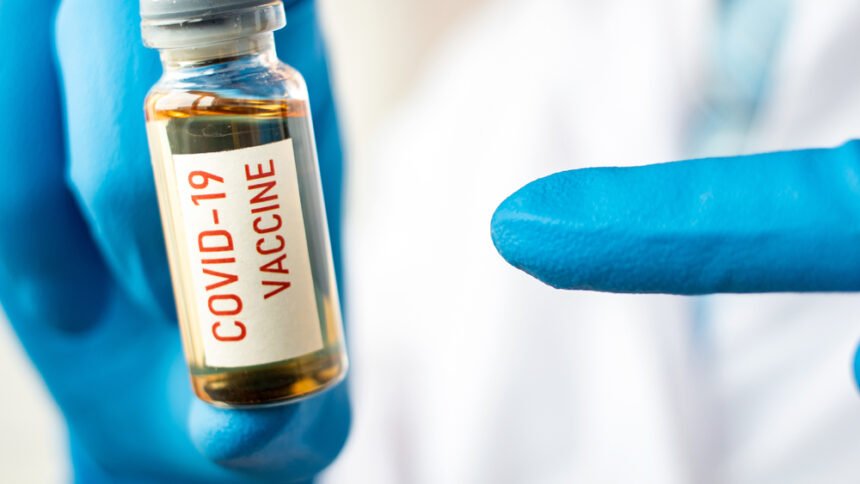A few different options for the COVID-19 vaccine are already being distributed across the United States (and the globe), and considering the damage the pandemic caused both health-wise and economically, speedy dispersion is being well-funded, with a vast majority of frontline healthcare workers having already received their first dose of the vaccination (both major vaccines require two doses, and many healthcare workers have already received both). It is one of the most important innovations to help fight the pandemic.
Health data from previous vaccination distributions helped form baseline strategies within the supply chain, but given the truly unparalleled breadth of the distribution, new strategies and technologies are being leaned on to help get the vax to as many individuals who desire it, as quickly as it is being created in laboratories. ?There are many moving parts and coordinating this complex effort has proven to be quite resource-intensive.? says Sanket Shah, clinical assistant professor for the online masters of Biomedical and Health Information Sciences at the University of Illinois, Chicago,
Here is a closer look at how the supply chain for vaccine distribution is helping protect the country and reduce the spread of COVID-19 in a timely fashion.
The Pieces
With a vaccine distribution, there are many unique parts to the supply chain when compared to a normal product?s journey from manufacturer to shelf. The most obvious being an increase in oversight from the government. All drugs have stricter guidelines for manufacturing and distribution than products like paper plates or hand sanitizer, and vaccines must toe the line between safety and importance of distribution, which adds another layer of government oversight to the process.
During the H1N1 pandemic of 2009, a vaccine distribution expertise team was hired by the Department of Health and Human Services to consult on distribution plans, ultimately correcting many preconceived ideas the team had. With COVID-19, these teams were instituted long before a vaccine was available, and the almost-overnight deliveries to hospital workers following approval can be attributed to this early planning.
Once the teams, consisting of disease management leaders and public health officials, had their ideas in place, they needed to share them with the manufacturers in guideline form and receive confirmation that distribution efforts would mimic their plan. Labeled ?Operation Warp Speed,? the government?s plan includes slightly different paths for the Pfizer and Moderna vaccines, respectively, but they are similar.
For Pfizer, the drug simply goes from manufacturer to packaging, to UPS and FedEx for distribution, where the Moderna vaccines make a pitstop at McKesson Distributors after being packaged and before being delivered to FedEx and UPS facilities. Both vaccines are then distributed to hospitals, pharmacies, Indian Health Service Centers, mobile vaccine units, and others, where they are then utilized on patients. ?the logistics around manufacturing directly to the vaccination facility are important.? Adds Professor Shah ?Equally important is managing the inventory within each site and coordinating at local and state levels to move doses in-and-out of geographic locations where patient need and adoption are highest.?
Storage/Wastage
?Both vaccines require a cold supply chain and have a limited shelf life after thawing.? Says Dr. Jason Jolley, Professor of Rural Economic Development and MPA Director of Leadership and Public Affairs at Ohio University. However, many items that are regularly delivered to those vaccine destinations above also require cold storage, so proper delivery is more important than actually creating spaces to keep the vaccines cold. ?if any point along the vaccine supply chain is not able to maintain the requirements of the cold chain, then we can have issues of spoilage and obsolescence.? Says Suresh Acharya, Professor of Practice at the University of Maryland Robert H. Smith School of Business.
Overstocking means wastage, and wastage is simply not something that can happen in bulk with a vaccine as important as this one. With that, even though many pieces of legislation exist dictating who is eligible for the first rounds of the vaccine, wastage prevention caveats have also been put in place, and most cities are allowing anyone and everyone to do somewhat of a standby, allowing them to get any vaccines that would otherwise have to be thrown away after a given storage period has elapsed.
Annual?
It generally takes years of research to determine if a vaccine will continuously protect against a given pathogen, and though the COVID-19 vaccine has moved fairly quickly, there are still some questions that will simply have to be answered at later dates. One early point of optimism, though, is that the vaccines are believed to work against a couple of new mutations of the COVID-19 virus, giving doctors and scientists reasonable hope that this vaccine will not be a ?one and done? medication.
There are still many questions to be answered, but thanks to a stellar preparation team and distribution discussions that began long before a vaccine was even available, early stages of distribution seem to be going quite well.

